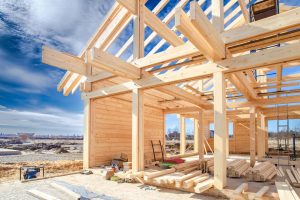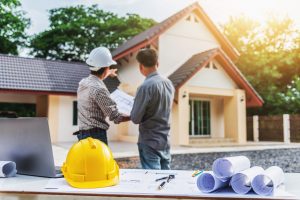
Every person has, at one time or another, aspired to become a homeowner. It’s a milestone in many people’s lives, but finding the perfect home can sometimes be a struggle. After all, not everyone has the same needs and requirements when it comes to their ideal residence, and searching for the right home can be time-consuming and exhausting.
One good way to avoid this problem is to build your own home from scratch. Many people would like to build and design their own house, but most don’t because they think it’s too much work or is too costly. In reality, however, building your own home from scratch can save you money and can be a hassle-free endeavor with the right help.
That said, here are some steps you should follow when building your own home:
- Do Your Research
As with any kind of undertaking, ample research is needed. When building your own home from the ground up, you need to know how much space you’ll need. This is probably one of the most important things you have to find out before buying any building materials. You also need to decide whether you want to build a traditional or contemporary home. Fire safety regulations and building codes in your area that you have to abide by are also important factors you need to consider, among many others. If you aren’t sure of the codes you need to follow, you might want to contact an experienced builder such as JAB Construction home builders, who’ll make sure your house gets built correctly and adheres to building codes. Once you have the necessary information, you can then start shopping around for building materials.
Different types of materials include wood, bricks, metal, vinyl, cement, etc. Make sure you research about each one to avoid wasting money on those you don’t need. It would also save you the trouble of looking for them in a hardware store. This way, you can plan out which materials would suit your dream house best.
- Write Down Your Building List
Writing down your wants and needs for your new home can help you come up with a real plan. You can start by asking yourself questions about what you have in mind, then you can figure out your answers once you start thinking about your family’s basic needs. When you write down your list, do it in a way that makes sense to you.
After you’ve written down your needs for a new home, look at different houses that have already been built. This will give you a better idea of the amenities you might want to have or do away with.
Finally, make a real plan of action. Consider the following questions:
- What do you want your house’s main purpose to be?
- Do you want to move quickly?
- Do you want to build a home that’s near where you work?
- If you want to sell your current home, do you want to sell it as soon as possible so you don’t have to pay for advertising and put your home on the market for months?
Once you have answers to all of these questions, you can have a real plan in front of you, which will help you become more successful in building your new home.

- Design Blueprints
There are a couple of ways you can design blueprints for your ideal home. You can opt for a predesigned blueprint, make one yourself, or hire someone to do it for you. No matter which method you choose, the important thing is to get your plans right. Not having your plans ready will mean that the rest of the project can get complicated and you can end up spending excessively.
Blueprints serve as the framework for your home, and it’s important to get this right so that the building will have a strong foundation. If you don’t have any experience in drawing up blueprints yourself, it’s better to work with professionals who specialize in this field.
You can also look online for blueprints that you can personalize for your needs and that of your family’s.
- Come Up With A Budget
Every construction project must have a budget so you can maximize your resources well. Building a house on a budget can be a challenge, especially if you don’t have a lot of knowledge about what goes into constructing your home. However, knowing how much money you need will make it much easier for you to get started.
Be realistic about how much you can spend. When you’re figuring out how to calculate your budget, you should consider how much you’re actually spending on in terms of materials and labor. Consider looking for real estate professionals who can help you calculate the price of constructing your home so you can get the cash you need.
In addition, have a savings plan. This is important because the costs associated with building a home can be very expensive. One way you can save on money is by getting the necessary materials yourself and purchasing them at wholesale prices. This will help you acquire them at a much cheaper cost and in higher quantities. Doing this can help save you thousands upon thousands of dollars.
When budgeting, make a spreadsheet to keep track of all your expenses. After this, you can put together a plan on how to pay for the materials you need. Consider the following steps:
- Go over all your statements and receipts
- Categorize all your spending
- Download an app that will help making tracking your expenses an easier process
- Find a spreadsheet template that is fully customizable to make tracking easier
It’s also important to have a document where you keep all the receipts for your expenses so you can be sure that you aren’t missing something or overspending.
- Decide What Building Materials You Will Use
When buying or remodeling a house or commercial structure, you must decide whether you want to use traditional or modern building materials. Although some people may prefer the former since they’ve been used in construction for years, there are a lot of advantages to using modern building materials instead, the benefits of which may just surprise you.
One of the biggest advantages modern building materials have over traditional ones is that they can be customized to fit your budget better. Here are a few ways this can be done:
- Buy recycled materials to use when building, as this will help lower the overall cost.
- Buy a home-building kit. These kits come ready with everything you need, so you won’t have to go back and forth to the hardware store to purchase materials. You can choose from many different types such as bricks and tiles, or you can even pick up a new design and start from scratch.
Traditional building materials include natural stone, wood, and slate. On the other hand, modern building materials include concrete, steel, brick, glass, aluminum, and tile.
The right materials can also help you build an energy-efficient home. This has become a necessity in the past few years as energy prices have skyrocketed, and electric bills have spiked. An energy-efficient home is built to retain heat and to keep the air cool while also reducing energy loss through the air conditioning system. Modern buildings are constructed using a combination of renewable energy and various types of materials, such as recycled steel, insulation, composite lumber, and low-e windows.
Many newer building technologies are making it easier than ever to build energy-efficient homes. For example, thermal insulation is used to lower the amount of cooling that a building loses through the use of condensation. This prevents the AC unit from overworking and overheating, which, in turn, helps in energy conservation. Other energy-saving techniques include installing energy-saving windows, doors, and others.
- Select A Location
Picking the location of your new home is probably one of the hardest things you will have to do. Make sure your location of choice has a lot of property development being done so you won’t end up spending a lot of money on real estate. Check if there are houses going for sale on a regular basis. This is important because picking the wrong location can hurt your home’s value in the long run and you might struggle selling it if you ever choose to put your home out on the market. This is why a beachfront property can cost you around $500,000, but the same house located in the suburbs will only run at a fraction of the price.
Make sure you also have the right amount of space available for the house you want to build. The type of house you’re going to construct will dictate how much space and floor area you need. It goes without saying that a mansion would require a much larger space compared to when you want to simply build a two- or three-story home.
When looking at building sites near a city or a large metropolitan area, pick a few and compare them in terms of costs when buying a property, tax rates, the neighborhood, and even the weather. This will help you ensure that you pick the right lot to build your house on. If you buy the first lot you come across, you might end up overpaying for and get stuck with a bad deal. This is why you should always look into the details of the lot you’re buying and compare them with similar lots that are for sale in the area.
You should also look into the availability of these locations and how many other homes are nearby.
- Hire A Contractor And Start Building
When hiring a contractor to build your new home, look at the qualifications they have. Be sure they have the ample experience and background for the project you have in mind. A reputable company will be able to provide you with their qualifications, background, and portfolio of works.
It can be a struggle to figure out how to find the right contractor for your home building project since there are many available options. Here are some steps you can take when searching for the right contractor:
- The first step to take when searching for the right contractor is to know what you want. This is important because many contractors are experienced in one type of building but not others. Knowing what you want can help you find the best contractor to fit your building needs.
- See if they have the appropriate license and if their building documents are up-to-date. Building a home is a huge investment, and the last thing you need is to hire someone who isn’t licensed and might end up costing you more money than you had initially planned because you failed to adhere to building codes. Making sure your builder is licensed will help you avoid many possible problems down the line.
- Find out if the builder is insured. When building a house, many things can go wrong. Whether an accident has occurred or something was overlooked, there are many ways damaged can be caused to a person or your property. Seeing if your builder is insured will provide you with the peace of mind knowing you don’t have to pay out of pocket for any mistakes they make.
- Ask for references. A reputable builder will have many to provide. Asking friends, family, or colleagues is also a great way to ascertain the type of builder you’re dealing with. A competent builder will have many customers willing to put in a good word for them.
Conclusion
Building your own home has many advantages, which include being able to save money, making the most out of the rooms you have, and having a home designed for your specific needs. Although building your own home can seem complicated, the process can be made a lot easier by taking the necessary steps such as hiring a reputable builder, making a plan, coming up with a budget, and picking the right location. All these combined will let you successfully build your house from scratch.






























